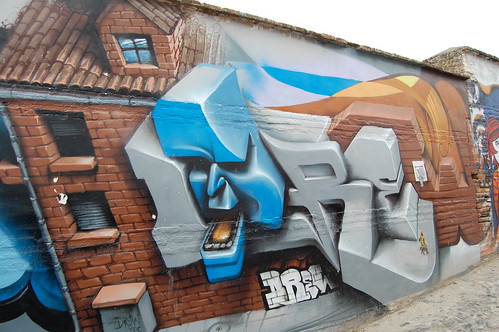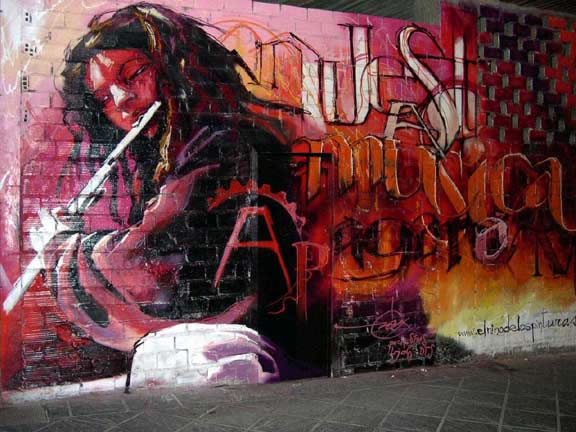
It seems that graffiti is something that is unavoidable in most parts of the western world. And, just as in most other cities, there is graffiti in Granada too. But Granada has taken these four steps to control of this type of spray “art form”.
Now, I know some people admire graffiti painting found on buildings. They consider it to be an attractive form of modern art. And I agree, but only when it is done in the correct manner.
To make my viewpoint clear, generally speaking, I do not like graffiti art for the following reason.
In most cases it is done by people who give no regard for the wishes of the owners of the property upon which it is being sprayed, and thus, in these cases, the graffiti is just vandalism. However, if the graffiti sprayer has made sure that what he or she is doing is legal and that he or she has the permission of the property owner, then I can accept it. Unfortunately this rarely happens. And so even though the graffiti may be well painted and attractive in its own right, it should not be there.

And so what is Granada doing to control the spread of graffiti?
The First Step – Removal
Paint removal is a costly procedure and the Granada Ayuntamiento (city council) is investigating up to date cleaning systems for graffiti paint removal. For instance, just recently a company called “Quitar Graffiti Granada” (Remove graffiti from Granada) spent a half day cleaning graffiti – at its own expense – from the Moorish well of Zenete and surrounding area in the Albaicin. Granted, one of the reasons they did this was to (apparently) demonstrate how their products do not use abrasives and are ecologically efficient. But the well of Zenete did get cleaned at the same time.
On another front, a new type of cleaning agent is currently being tested which, when used, leaves an invisible coating on the material just cleaned. This coating makes it difficult for paint to adhere to it, which will make any future graffiti much easier to remove.
The Second Step – Prevention
Access has been made difficult on some of the sites attacked by the “taggers” (graffiti artists). Once the paint has been cleaned off, deterrent planting, using specimens such as prickly pears for instance, have been positioned around the site. There is just such a place near the Autovia of Granada and since these plants have been put in, the walls have been left unsprayed and untouched.
Third Step – The Law
A law was recently passed which brings a fine of up to 3,000 euros against anyone found guilty of spoiling vehicles, parks and gardens or listed buildings with “graffiti art”. And if under-age minors are found guilty of defacing property then his or her guardians/ parents can be held responsible for paying the fine. Applying this law should help deter even the most active tagger.
Fourth Step – Education
Several projects in Granada have recently taken place in an attempt to educate and direct the efforts of taggers away from damaging buildings and property.
One such project was a “first” for Spain when an underground car park in Granada was “decorated” by individual graffiti artists. The first floor of the car park was attractively “graffiti painted” to give the impression of wild landscapes mingling with fantastic characters such as nymphs. Subsequent feedback was obtained from the local residents before deciding on how best to paint the remaining three levels of the car park. Even though this project may be considered by some to be a waste of time and money, I believe that anything that can be done to re-educate and develop social awareness and responsibility is another step in the right direction.
Graffiti in Granada has increased over the last few years, and some of it is really attractive, and acceptable, because it has been done with permission of the property owner. But other examples of graffiti are not so well received.
Many private individuals and the Ayuntamiento are doing everything in their power to stop the wrong application of graffiti. I hope the prevention of this illegal “art form” is successful.
I love my city. It is beautiful and I certainly do not want to see it spoiled by this anti-social behaviour.

No comments:
Post a Comment